Seaweeds of the South African South Coast


Order Ceramiales
Family Ceramiaceae
Ceramium sp 2
Plants largely creeping, attached by massive bundles of rhizoids emitted every third node of the main axis, only the top part for ca. 2 mm free from the substrate. Thallus largely complanate, branched every third segment, the laterals regularly alternating. Apices hardly incurved, older branches rather pointed. Axes ca. 100 µm in diameter, broader when tetrasporangia are present. Segments with six periaxial cells, these at first forming two acropetal cells and a further row of corticating cells, before forming an additional two basipetal corticating cells. Older segments with several corticating rows, both acropetal and basipetal, the cortical bands with straight upper and lower border, the uncovered part of the central cells in the creeping main axis longer than broad. Rhizoids formed every third segment of the main axis, virtually each cell of the cortex directed towards the substratum, cutting off a rhizoid. Mature rhizoids in tight bundles, with a broad cell cut off at the apex of each rhizoid. Tetrasporangia mainly formed in the plane of branching, measuring ca. 62x42 µm, cruciately divided, remaining covered by corticating cells. Spermatangia covering a number of subapical segments. Carposporophytes with 2-3 round gonimolobes of various ages, the largest ca. 150 µ in diameter, individual carpospores ca. 25 µm across. On average six involucral filaments present.
Collections, ecology and regional distribution
Found as an epiphyte on Ecklonia radiata and Anthophycus longifolius, so far only found in the Kei region and Mkambati (43-47).
World distribution: unknown.
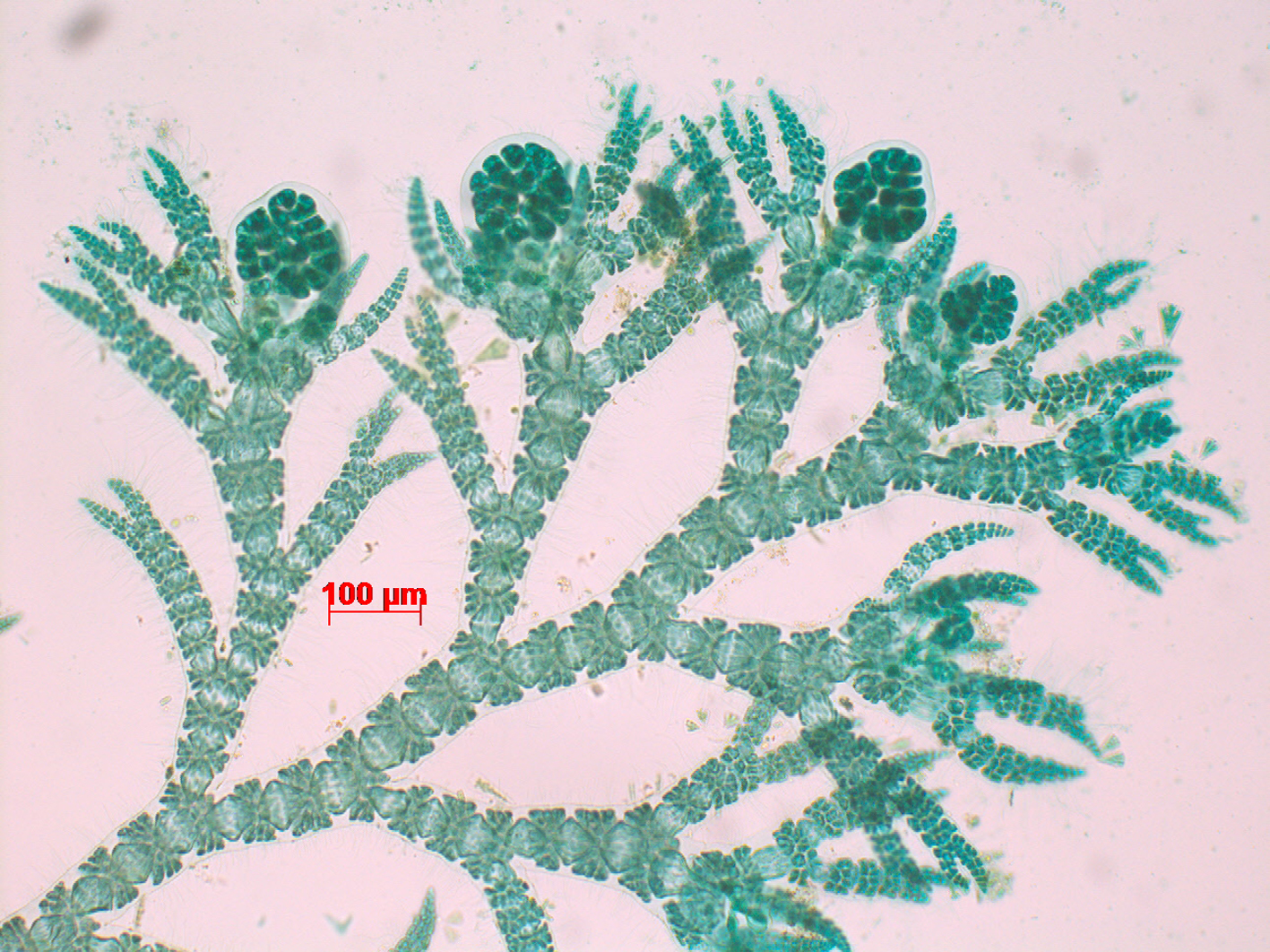
Ceramium sp. 2, bearing carposporophytes. Stained slide material, Mkambathi.
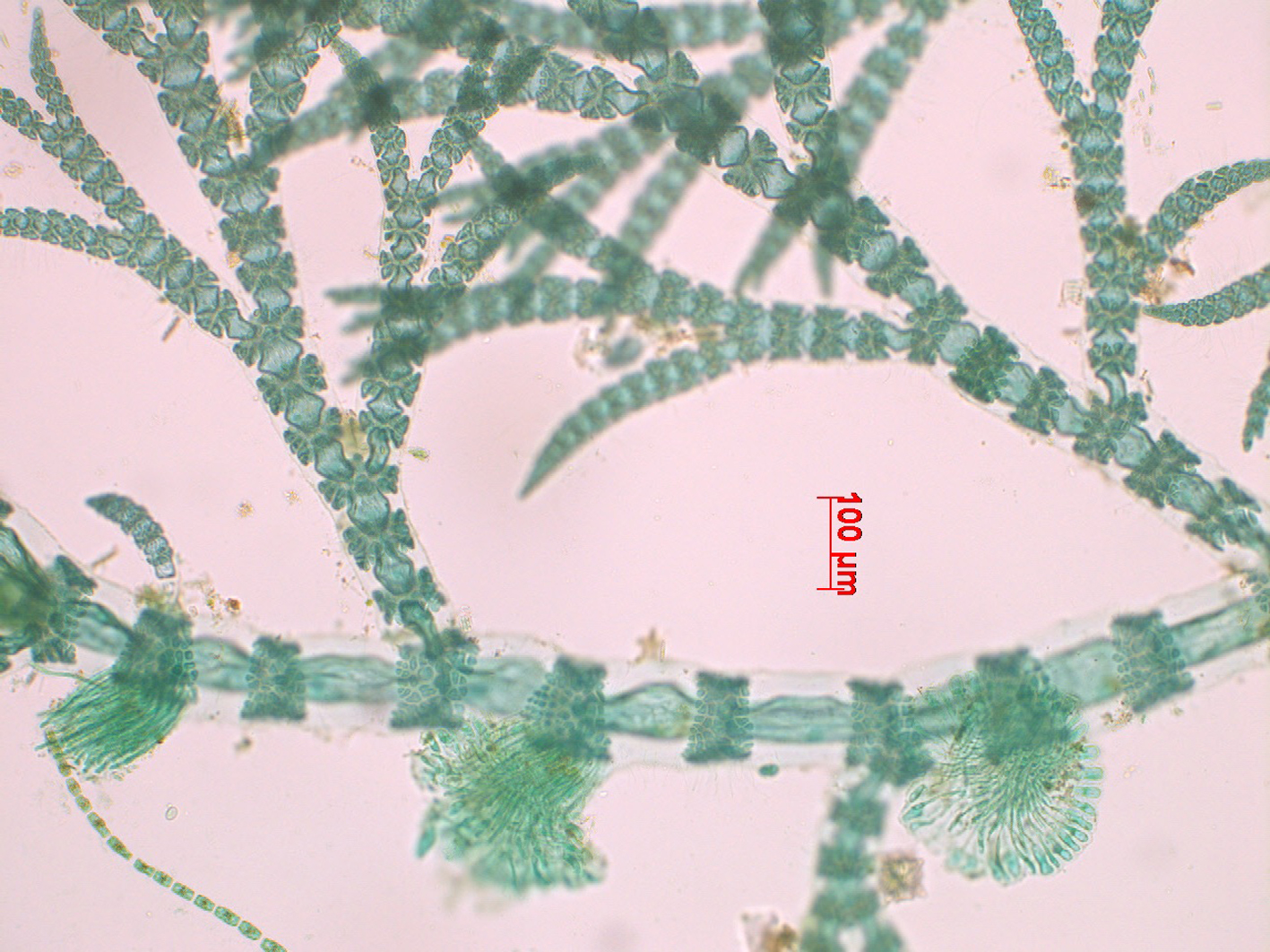
Ceramium sp. 2. Creeping basal axis with uprights and attachment rhizoid bundles. Stained slide material, Mkambathi.
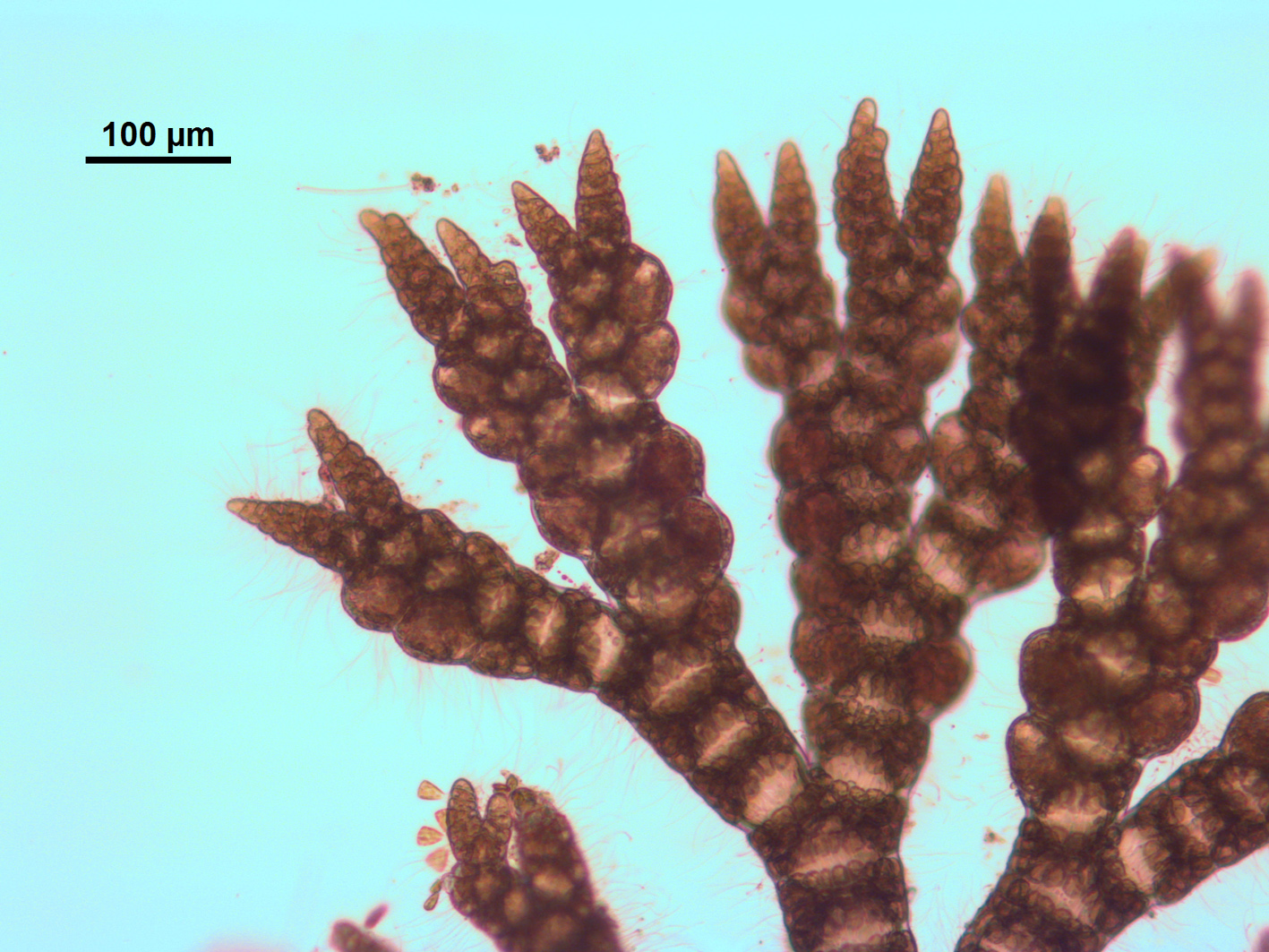
Ceramium sp. 2, tetrasporangia, Kei Mouth.
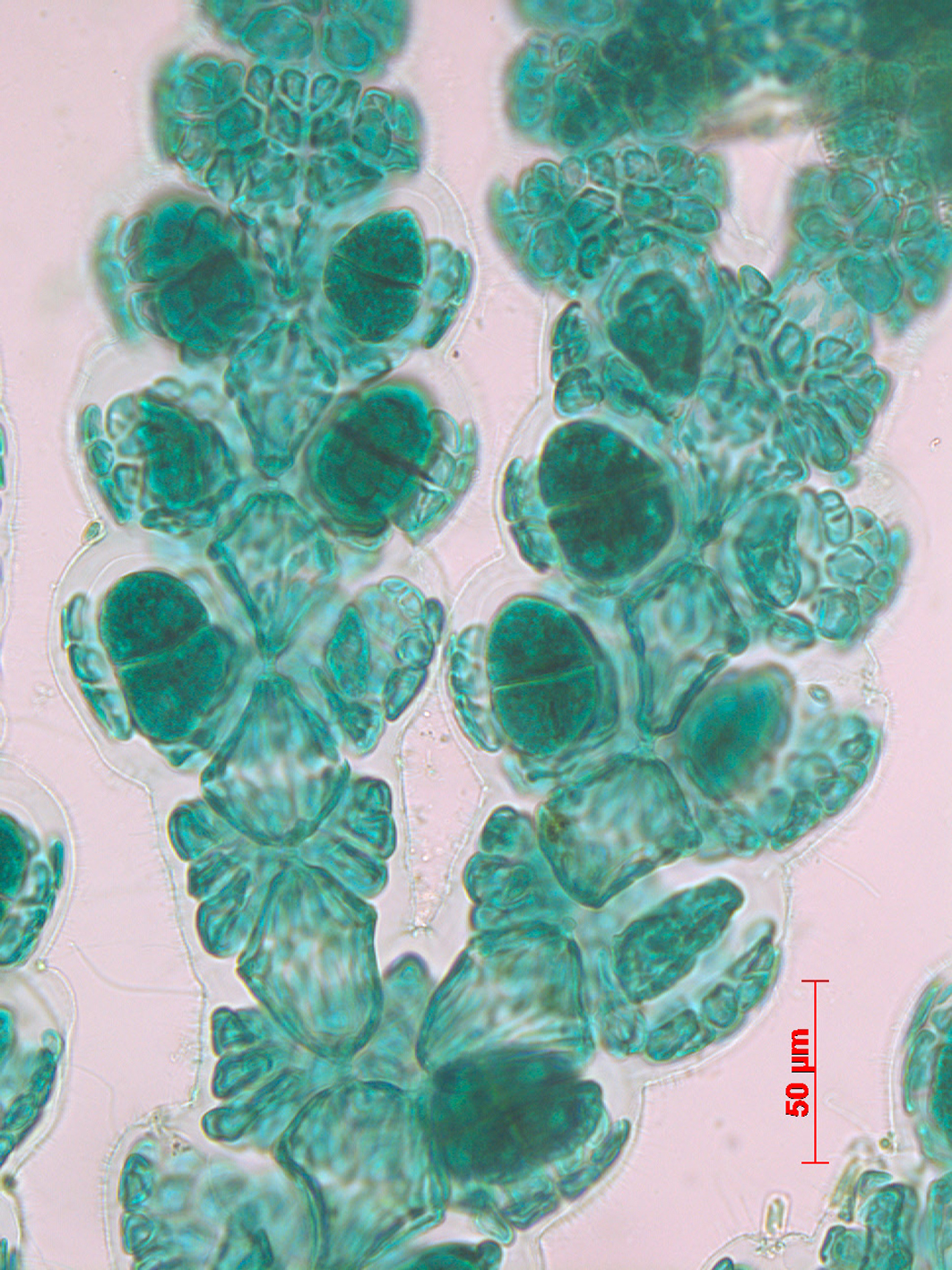
Ceramium sp. 2, detail of tetrasporangia. Stained slide material, Mkambathi.
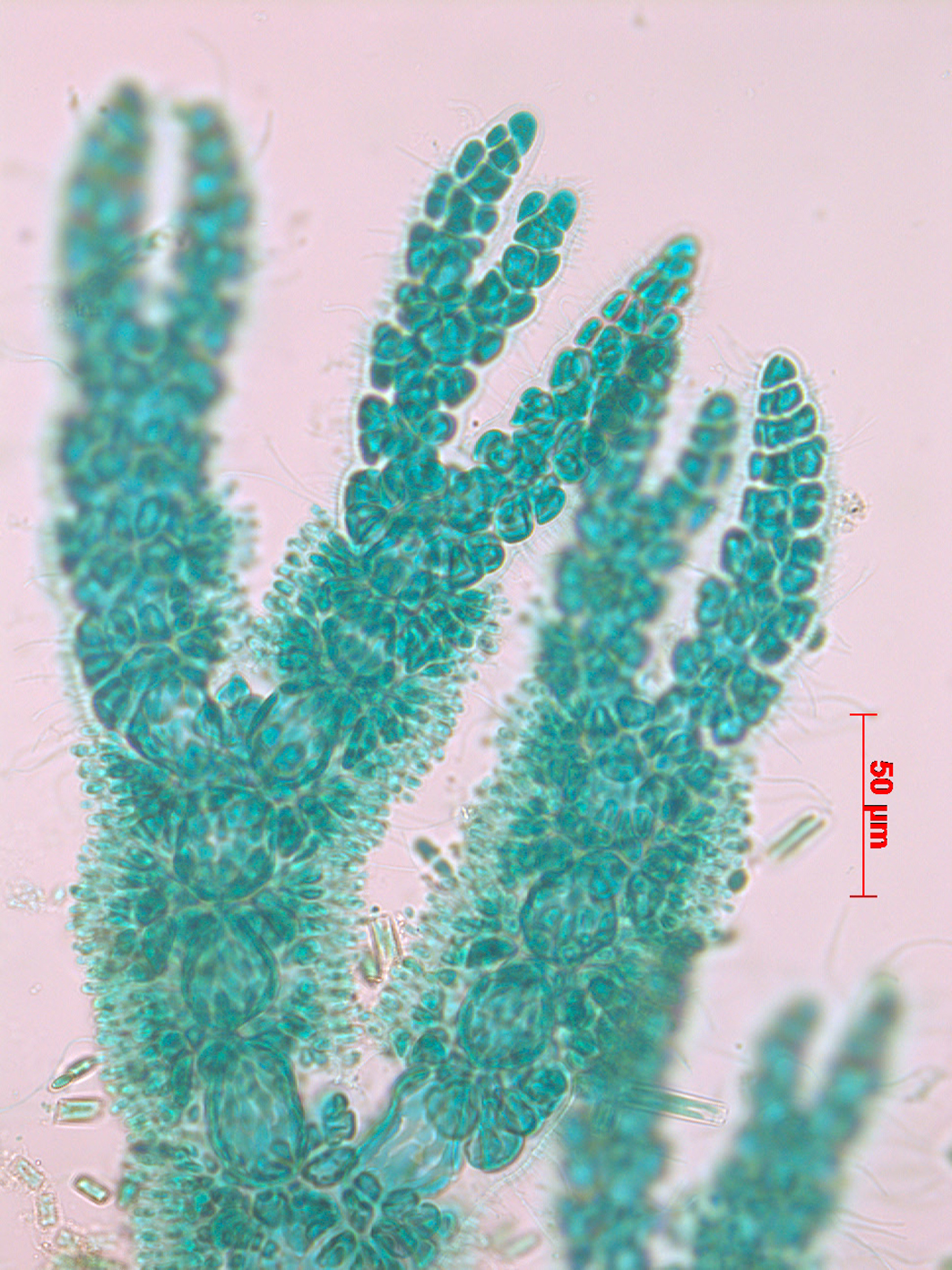
Ceramium sp. 2, male thallus. Stained slide material, Mkambathi.
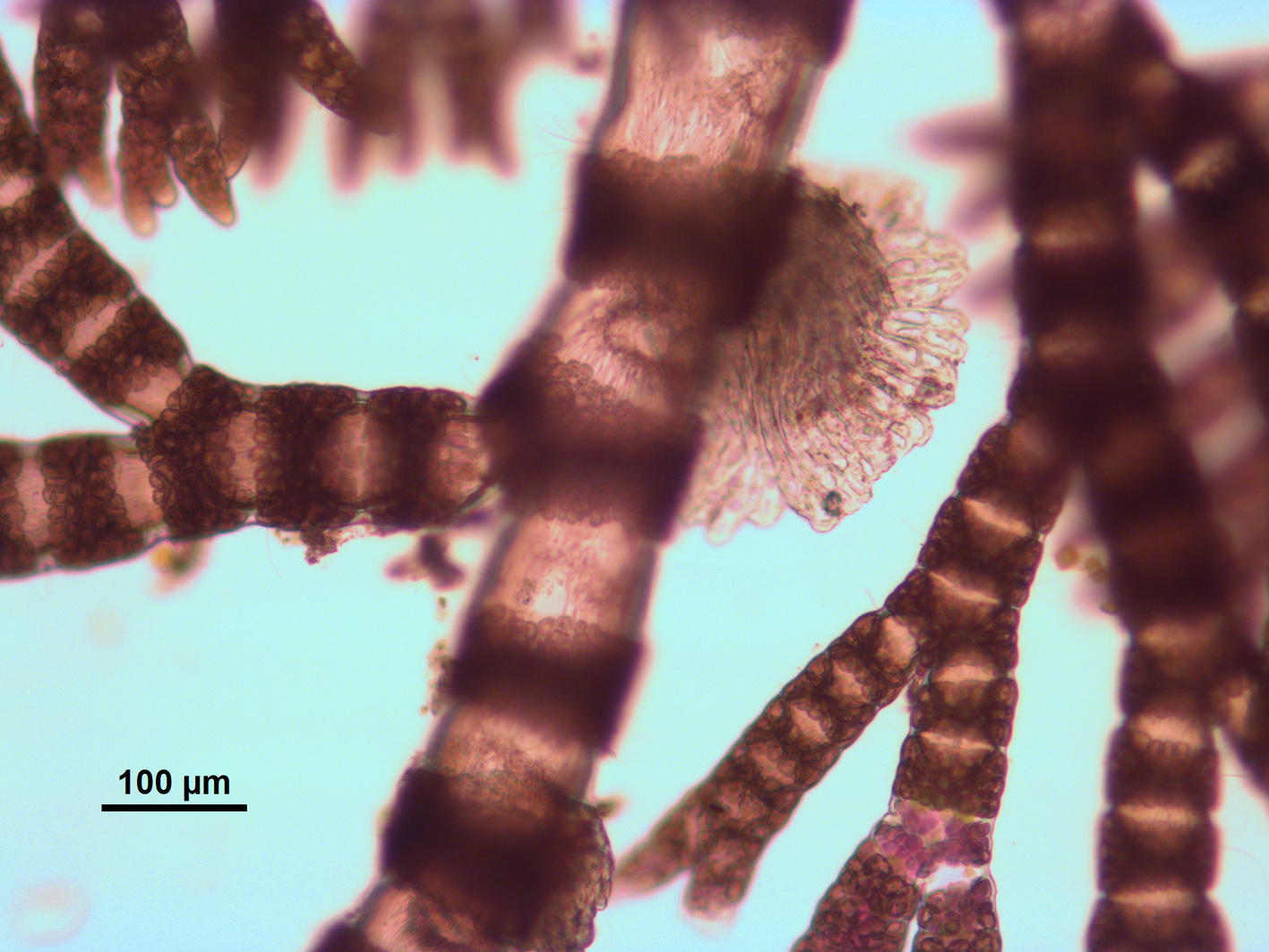
Ceramium sp. 2. Detail of a rhizoidal bundle on a basal axis (centre), Kei Mouth.
Cite this record as:
Anderson RJ, Stegenga H, Bolton JJ. 2016. Seaweeds of the South African South Coast.
World Wide Web electronic publication, University of Cape Town, http://southafrseaweeds.uct.ac.za; Accessed on 07 January 2026.